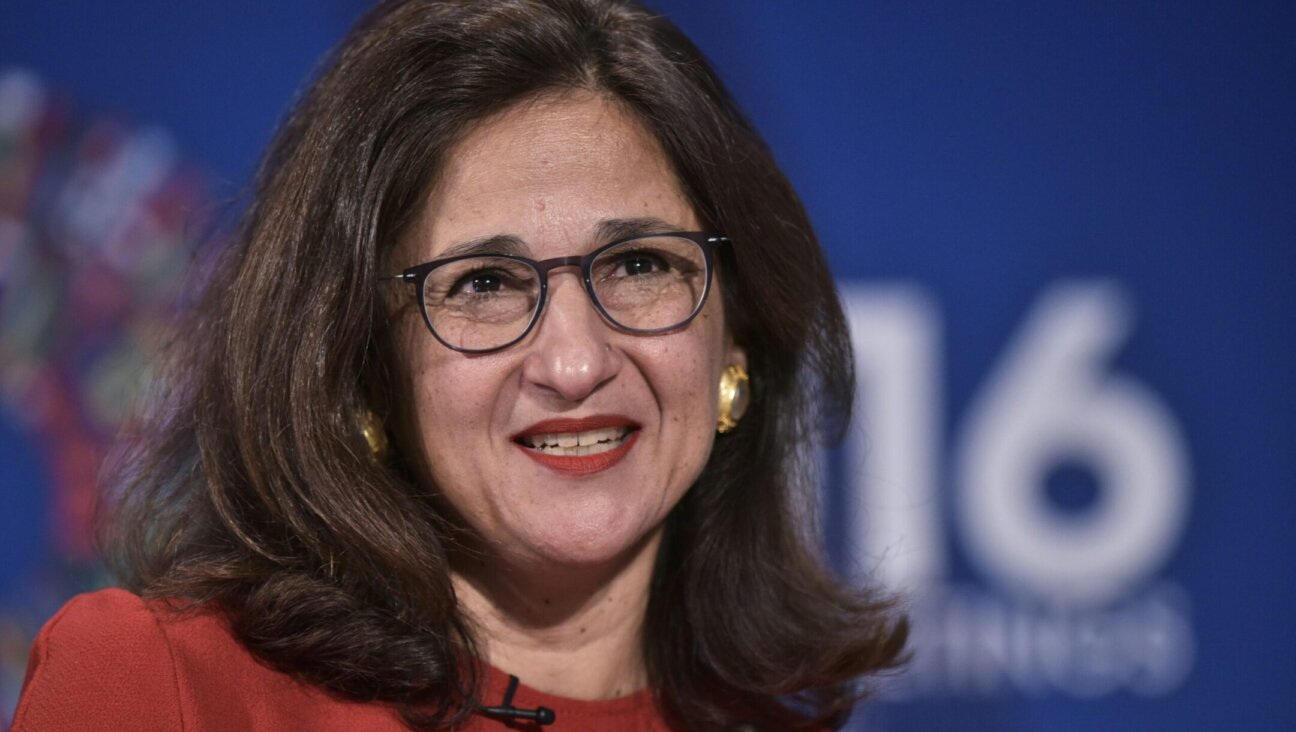One Synagogue, Two Religions
UTRECHT, Netherlands— Near the bustling heart of this Dutch university town, at Springweg 162, there stands an imposing brick building with gold Hebrew letters engraved above the doorway. But the building exterior belies what occurs inside. On Saturdays, no prayers are read from the Star-of-David-adorned altar. The Holy Ark, which used to house three Torahs, is now no more than a bare cupboard.
Come on a Sunday, though, and the place is full. The site, used by Utrecht’s Jews since they were given permission to move into the city at the end of the 18th century, is now home to a church group.
“I wish we could have the old synagogue back. It’s ours,” said Rabbi Aryeh Leib Heintz, who grew up in Houston and has been the head of the congregation for 17 years.
The Jewish community has not moved far. It holds its Sabbath morning services just beyond the building’s southern wall, in a small chamber that was one of the old synagogue’s schoolrooms. The new synagogue can seat 60, but on some Saturdays only nine men attend — one shy of a minyan, the quorum required for conducting services in their entirety.
Fewer than 1,000 Jews now live in Utrecht and in its environs. According to Heintz, no more than 150 to 180 of them are members of the congregation at any one time. Utrecht has no kosher stores, Jewish shops or Jewish schools, and many young Jews have moved to Amsterdam, where there is a vibrant community, or to Israel.
“I don’t think I will stay,” 26-year-old Yael Sihman Diaz said after Rosh Hashanah services, in a café overlooking Utrecht’s winding Old Canal. “I think most of the young people will go to other countries. I’d like to go to America.”
Young families are probably better off where there are more facilities and resources, the rabbi’s wife, Brocho, said as she sliced tomatoes in the couple’s living room.
“It may sound suicidal, but if someone chooses to go to a community where Jewish life is more active, I support it,” Heintz said.
Jews first began to settle in Utrecht at the beginning of the 14th century, but were expelled after being accused of poisoning wells during the plague of 1349. In 1546, Charles V formally forbade Jews from living in the province of Utrecht, though they were allowed into the city gates during the daytime to conduct business. It was not until 1789 that they were granted permission to live inside the city, and a group of wealthy Portuguese Jews bought the onetime Mennonite church at Springweg 162 in 1796.
The edifice eventually fell into such disrepair that in 1926, an entirely new synagogue was constructed on the existing sight by Dutch-Jewish architect Harry Elte. It was designed in the Art Deco style of the day, with asymmetric tile patterns, geometric-shaped wall decorations and a two-meter-high chandelier that resembles two wedding cakes glued back to back.
The Second World War devastated Utrecht’s Jewish community. Maybe 1,000 — or one-fourth of 4,000 who once lived there — survived, and many of those who did soon left, Heintz said.
“The old [congregation] board was mentally wounded by the war and didn’t see much future here,” the rabbi said. A father of 10, the stocky, 46-year-old sports a long, wispy beard
In 1981, the congregation was unable to afford building’s upkeep, and so it was sold to a local furniture maker who also proved unable to cover its costs. The edifice was then bought by an independent Christian organization called Stichting Zending en Opwekking, which roughly translates to Mission and Revival Foundation. The group is made up of born-again Christians who come to the former synagogue — since renamed the “Broodhuis” [bread house] — several times a week for prayer services and Bible study meetings.
By the time the foundation bought the synagogue, it was so dilapidated that there were holes in the roof and mushrooms growing on the walls, said Karel Asberg, the organization’s pastor. Foundation members spent more than 11 months and $50,000 restoring the synagogue to its former glory. They painstakingly repainted the walls with Art Deco motifs, and many members sold personal belongings to finance the reconstruction effort.
“We restored the synagogue as much as possible so when Jewish people come here, they find something of their own,” Asberg said.
The pastor has nothing but praise for the congregation and says that the former cantor is a personal friend. Heintz, on the other hand, refuses to set foot in the old synagogue, though he dreams of reclaiming it one day.
For his part, Asberg has not ruled out the possibility of one day returning the building to Utrecht’s Jewish community.
“When the Lord says give it back, we should do it,” Asberg said, staring upward at the light coming through a purple-and-red stained-glass window. “I don’t think it’s impossible. The Lord will provide for us another location.”
A location change has clearly been on Heintz’s mind, as well. He spoke enthusiastically of moving to Israel, but then stopped and said: “I have a mission here and Jews to take care of. There’s no one else to do it.”
Seth Rosen is a journalism graduate student based in Utrecht. He also has written for The Wall Street Journal Europe, U.S. News & World Report and The Baltimore Sun.

I hope you appreciated this article. Before you go, I’d like to ask you to please support the Forward’s award-winning journalism this Passover.
In this age of misinformation, our work is needed like never before. We report on the news that matters most to American Jews, driven by truth, not ideology.
At a time when newsrooms are closing or cutting back, the Forward has removed its paywall. That means for the first time in our 126-year history, Forward journalism is free to everyone, everywhere. With an ongoing war, rising antisemitism, and a flood of disinformation that may affect the upcoming election, we believe that free and open access to Jewish journalism is imperative.
Readers like you make it all possible. Right now, we’re in the middle of our Passover Pledge Drive and we need 500 people to step up and make a gift to sustain our trustworthy, independent journalism.
Make a gift of any size and become a Forward member today. You’ll support our mission to tell the American Jewish story fully and fairly.
— Rachel Fishman Feddersen, Publisher and CEO
Join our mission to tell the Jewish story fully and fairly.
Our Goal: 500 gifts during our Passover Pledge Drive!






















